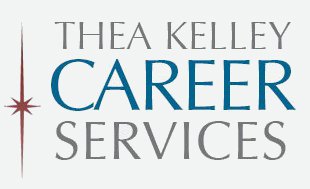“Should I add a career break on LinkedIn?”
Sometimes LinkedIn is like that nice friend who always encourages you–and never warns you when you’re about to step in something messy. The new Career Break section is a bit like that. It can be helpful, but should be approached with care.
After Covid, employers have become somewhat more accepting of a less-than-continuous work history. They’re less likely to assume that “time out” necessarily means “time down-and-out.” They’re not so quick to picture an unemployed person lying on the couch pulling another brewski out of the 12-pack. Some even agree with LinkedIn that “experiences outside a linear career path can make people better colleagues, thought partners and leaders.”
Is that the view recruiters will take when they see your Career Break on LinkedIn? Maybe. Maybe not. It depends.
When should you think twice about adding a Career Break on LinkedIn?
If you recently left your job and are unemployed, a Career Break may call attention to one of your least attractive features as a candidate for employment: the fact that you’re not currently employed.
Before the LinkedIn Career Break section was even a gleam in a developer’s eye, you already had three good options for handling current unemployment on LinkedIn. For details, read my post, “How to Update Your LinkedIn Profile When You’re Unemployed.”
If a break in your employment history was only a few months long, and/or was many years ago, inserting a Career Break into your profile actually emphasize a gap that otherwise wouldn’t have received much attention.
One factor in your decision should be the nature of the specific break. More about that later.
When is the LinkedIn Career Break section useful?
When the break occurred in the recent past, and/or was lengthy, it may be beneficial to clarify it by adding a Career Break. You do this by clicking the “+” sign to the right of the Experience heading and selecting “Add Career Break.”
Again, the impact on your profile depends to a large extent on the “Type” of break.
What “Type” of career break will you select?
LinkedIn gives you the following options for labeling your break:
- Bereavement
- Career transition
- Caregiving
- Full-time parenting
- Gap year
- Layoff/position eliminated
- Health and well-being
- Personal goal pursuit
- Professional development
- Relocation
- Retirement
- Travel
- Voluntary work
Do all of these options look equally positive to recruiters? No.
Of course, all recruiters are unique individuals and nobody can read their minds, but “Professional Development” is likely to get a good reception, especially if your Description explains that you completed relevant courses listed in your Education section. Education isn’t the only option, but it’s one of the best examples.
Other types of break likely to be viewed positively might include “Gap year” (if you recently graduated from school and used the time off to do something constructive or educational), “Personal goal pursuit,” “Relocation” or “Voluntary work.” “Travel” has a positive vibe and can build work-related skills such as cultural competence.
“Layoff/position eliminated” doesn’t say anything positive about you, but it’s not particularly negative either, and is probably better than letting a potential employer imagine that you were fired, or that you quit under circumstances that don’t reflect well on you.
The other types in the list have their pluses and minuses. They may be better than an unexplained break, but most of them have some potential to raise red flags in recruiters’ minds. When they see a lengthy period labeled as “Bereavement” or “Health and well-being,” might they, perhaps unconsciously, question the person’s resilience? When they see a recent break labeled “Full-time parenting” or “Caregiving,” will they wonder whether this person is ready to give their full attention to a job? Consider using the Description field to explain, without too much personal information, how your life situation has changed so that you’re now ready to work.
LinkedIn is not a career coach. Skillful career marketing is up to you.
As I hope I’ve made clear above, my answer to “Should I put a career break on LinkedIn” is “it depends.” LinkedIn provides a highly visible opportunity to market your capabilities, or, well, to shoot yourself in the foot. If you’re not sure whether your profile choices put you in the best light, consider working with a career professional, or at least showing your draft to a trusted contact who has hiring experience before posting it. And do remember to proofread.


